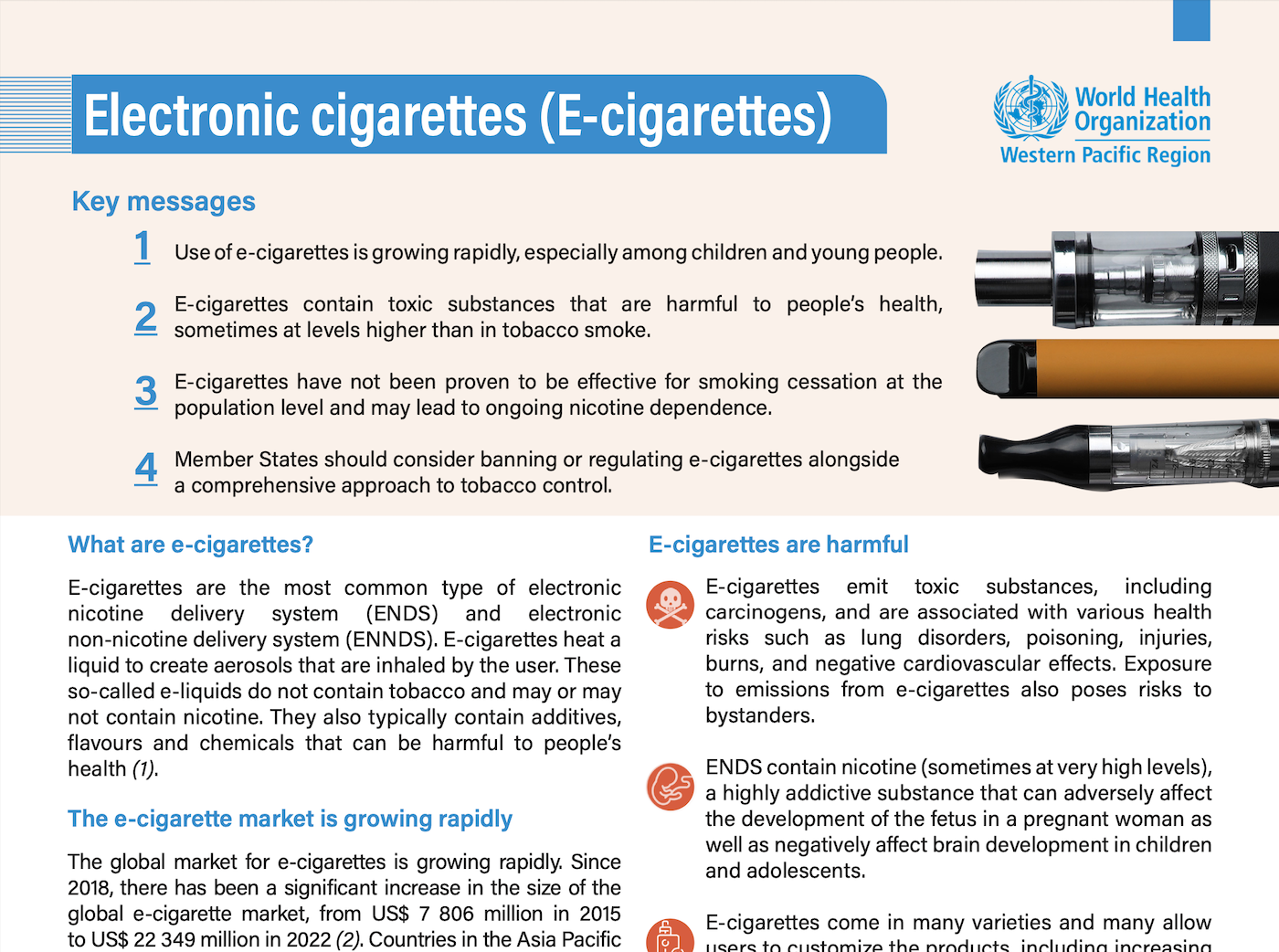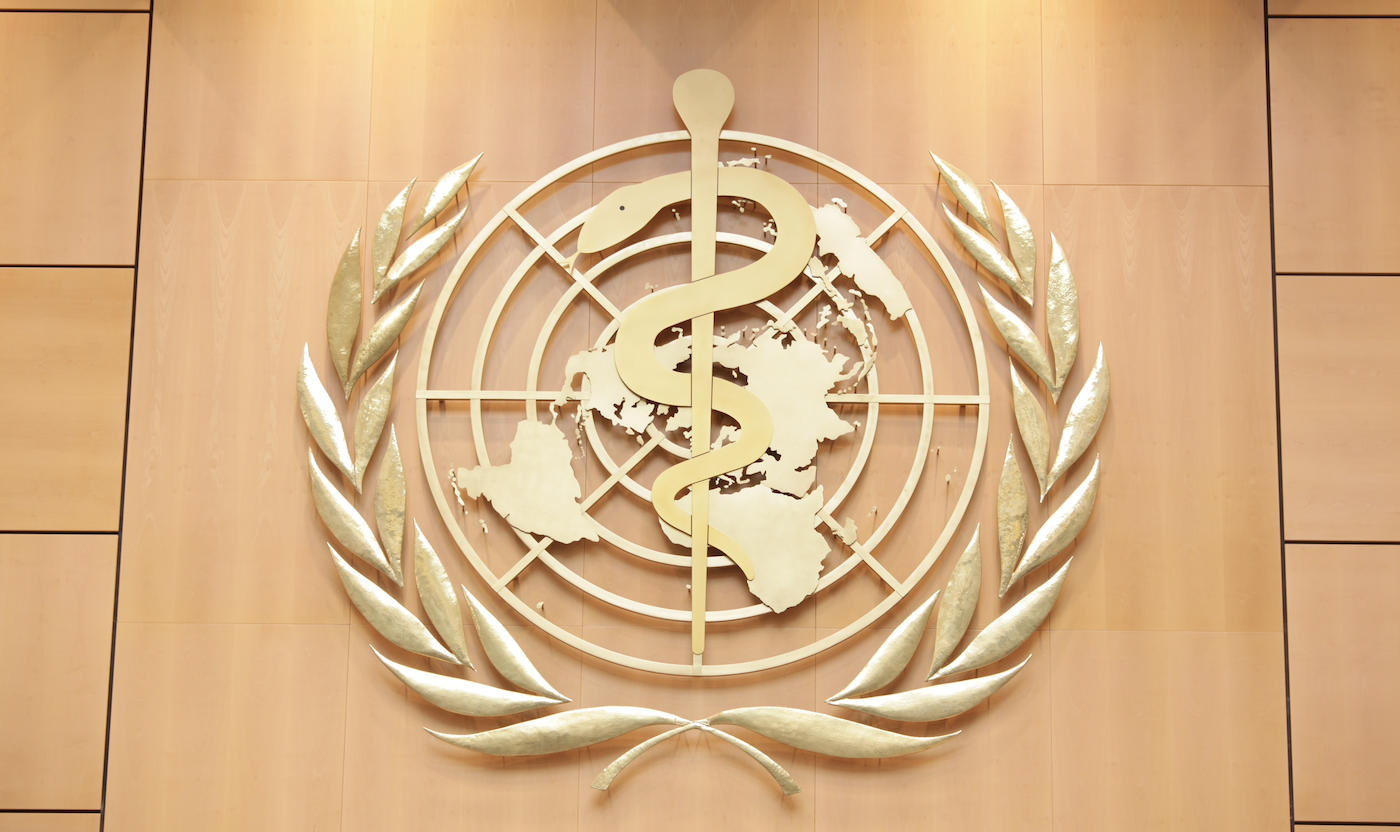“What looks cute, smells good, but is designed to kill?” asked the World Health Organization (WHO) in a June 11 tweet: “A vape!”
This joke-format falsehood from our planet’s premier health agency is far from comic, when it’s only the most explicit recent example of a noxious campaign against harm reduction products that save lives.
The WHO and its regional offices and partners persist in outrageously misleading governments and consumers. Thanks to this orchestrated moral panic, many of the world’s adults who smoke are denied harm reduction alternatives—either because of resulting laws, or because they’ve been deceived about relative risks.
None of this is surprising anymore. In 2024, the WHO has earned a whole string of community notes for misleading vape-related tweets.
Take a recent e-cigarette “briefer” from the Western Pacific Region (WPR) of the WHO, which combines cherry-picked factoids and misinformation.
Ignoring adults who smoke, despite over 7 million annual smoking-related deaths among them, the document focuses solely on children—who may vape, though less often than claimed, but are not losing their lives.
That’s become par for the course with the WHO, as demonstrated at its Framework Convention on Tobacco Control (FCTC) COP10 meeting in February. FCTC Secretariat head Dr. Adriana Blanco Marquizo dismissed the lives of over 1 billion adults, arguing that their access to tobacco harm reduction “should never serve as justification for legitimizing products that could send even a single child down the path of addiction.”
Recommending bans or restrictions, the WPR document also claims that vaping products “sometimes” contain harmful toxins at levels higher than in tobacco smoke (utterly misleading, when the dose makes the poison and vapor is exponentially safer than smoke); and that there’s insufficient evidence to support vapes’ population-level effectiveness for smoking cessation (plain false).

The WPR was recently hit with a community note for a tweet listing debunked “dangers” of vaping. But none of this is surprising anymore. In 2024, the WHO has earned a whole string of community notes for misleading vape-related tweets, as Skip Murray described for Filter.
Until 2023, the WHO’s narrative centered on the so-called “youth vaping epidemic” in the United States. Public health agencies including the US Food and Drug Administration and Centers for Disease Control and Prevention declared this “epidemic” in 2018. At its peak in 2019, 20 percent of US youth reported vaping in the past 30 days (a total of “current” users inclusive of those who vaped just once in that month). By 2023, this figure had dropped (by 61.5 percent) to just 7.7 percent. In the face of this decline, the WHO has turned elsewhere in its bid to exaggerate youth vaping trends.
Even in relatively vape-friendly countries like the United Kingdom, youth vaping levels don’t match the WHO’s hype. But even the UK isn’t immune to the WHO’s pressure.
The WHO sacrifices adult health for the sake of an ill-founded youth-protection case.
While the UK’s figure for youth ever having tried vapes has recently risen, it’s still far lower than the 2019 US peak—and data from Action on Smoking and Health show “no significant change” from 2022-2023 in the proportion of 11-17-year-olds “currently” vaping or smoking.
The UK saw a larger increase in youth vaping from 2014-2015. That time, the British government didn’t react with restrictive measures.
Now, however, the UK is considering the Tobacco and Vapes Bill (currently interrupted by an election), which would restrict sales displays and introduce new powers to ban flavors, in the name of youth prevention. A planned vape tax will meanwhile reduce the financial incentive to switch.
Naturally, the WHO’s Europe regional office has been caught misleading the public. An April 25 tweet saying we “must reverse this trend” of youth preferring vapes to deadly combustible cigarettes was community-noted.
This all reflects the WHO’s broader strategy. Back in 2019, the FCTC Secretariat urged member parties to “remain vigilant” about tobacco harm reduction products, calling vapes a “treacherous and flavored camouflage of a health disaster yet to happen.”
In a January 2024 Q&A webpage, the WHO dodged the critical question of vaping products’ relative risk versus conventional cigarettes, instead generalizing that “both pose risks to health.” It included the now-familiar claim that vapes “have not been proven to be effective for cessation at the population level.”
Try telling that to the 2.7 million Brits (as of 2023) who used to smoke but now exclusively vape. That’s the majority (56 percent) of adults vaping there—and most of the rest (37 percent) both smoke and vape, which often means a reduction in smoking and/or a step along the way to switching entirely.
Saying that vapes are “designed to kill” is another new low in what’s become a procession of them.
The WHO’s sickening “designed to kill” tweet conflated vaping products with the tobacco industry—most vapes are not made by tobacco companies—and the WHO and its allies unsurprisingly ignore industry data that would undermine their position.
Major tobacco companies have seen sharp declines in cigarette sales attributed to adults switching to flavored, disposable and other vapor products. One reported an 11.4 percent decline in US cigarette volumes in 2023; another saw US smokeable products sales fall 10 percent in the first quarter of 2024. A third company, meanwhile, reported that in the first quarter of 2024, smoke-free products accounted for more than one-third (39 percent) of its revenues. In one market, heated tobacco products (another harm reduction option demonized by the WHO) are now outselling a major combustible cigarette brand.
Instead of promoting evidence-based ways to reduce the world’s biggest preventable death toll, the WHO sacrifices adult health for the sake of an ill-founded youth-protection case.
Saying that vapes are “designed to kill” is another new low in what’s become a procession of them. Hon Lik, the Chinese pharmacist who invented the e-cigarette, did so because he wished to quit smoking. Many millions have since followed that path.
The WHO should immediately abandon its vilification of vapes and instead empower adults who smoke to make informed health decisions.
But the harder the agency doubles down on harmful falsehoods, the more resistant it may become to what will, one day, be a humiliating climbdown.
Top photograph (cropped) by United States Mission Geneva via Wikimedia Commons/Creative Commons 2.0. Inset image of Western Pacific Region briefing via World Health Organization.
The author’s employer previously provided a one-off donation to The Influence Foundation, which operates Filter, to support travel to a harm reduction event. Filter‘s Editorial Independence Policy applies.





Show Comments